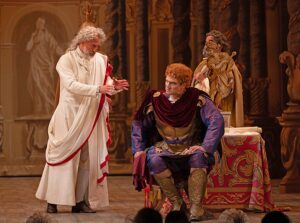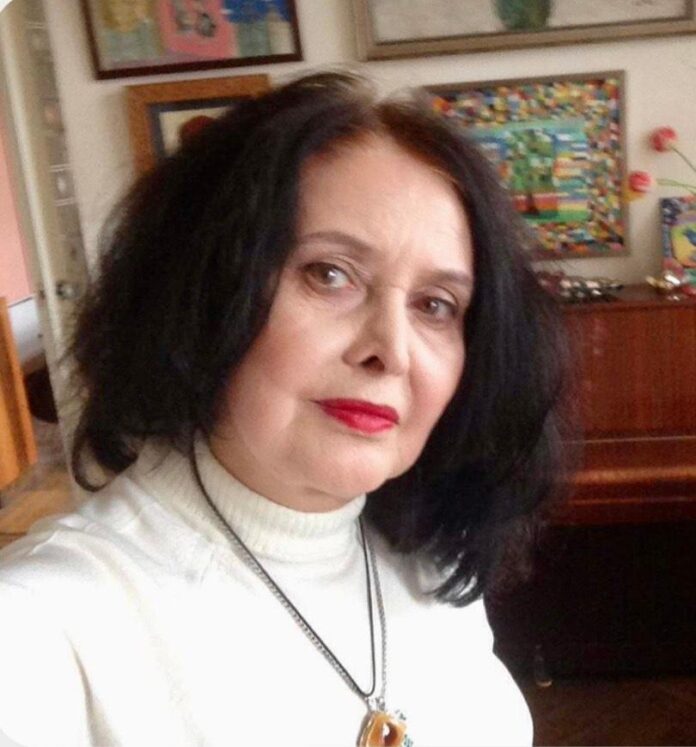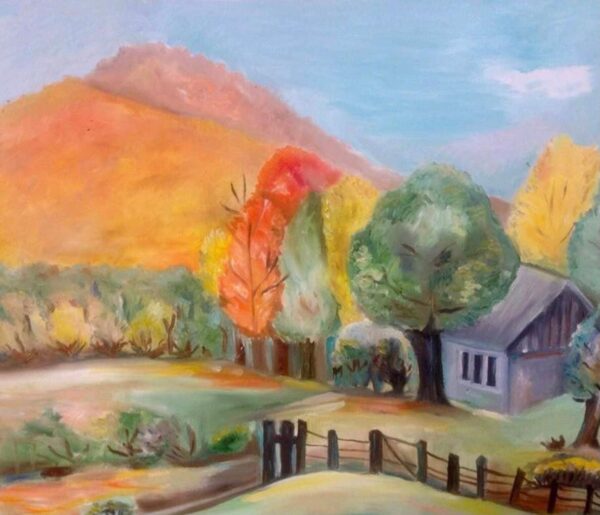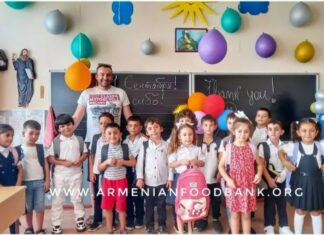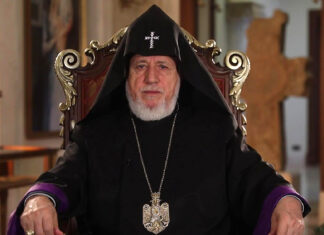YEREVAN — Artist Marina Vagharshyan’s apartment is one of my favorite places in our city. Everything is beautiful here — the interiors, the paintings on the walls, and the hostess herself. She is the fourth generation in her family who has made art, and even the youngest member of the family, the artist’s 8-year-old grandson, Mher, is a fan of drawing. Bright colors, sunny paints, multi-figure compositions on the canvases create an atmosphere of positivity and optimism, filling the soul with calmness, warmth and creative motivation, even if you do not paint yourself.
Marina Vagharshyan (born in 1953 in Yerevan) studied at Yerevan State Institute of Theatre and Fine Arts, Department of Design. In 1975-1986 she participated in two feature films and six animations at “Armenfilm” Studio, also directed the cartoon film “The Weathercock” (1986). She had solo exhibitions in Yerevan, Vienna, Kassel (Germany), Lodz (Poland), Dubna (Russia) and participated in numerous group exhibitions in Armenia, Georgia, France, UK, the US, Poland, Sri Lanka and Japan. Many works by Vagharshyan are held in public and private collections in Armenia and abroad. About 10 books have been published with her illustrations; more than 70 illustrations she created for magazines and newspapers.
“The miniatures of the artist from distant Armenia are made with the greatest scrupulousness, almost filigree finishing of details. But I wanted to note something else. Marina is an excellent ‘storyteller.’ Her works are small essays, short stories and even whole novels. They contain the philosophy of life, which has learnt love and disappointment, bitterness of separations and not devoid of self-irony wisdom,” wrote Gerhard Matthias of Germany.
“Marina Vagharshyan’s world is the world of women. Women surrounded by millions of secrets — and, of course, belonging to this fabulous existence. The paintings, designed in the style of Chagall’s fantasies, are an impulse to enter the peculiar atmosphere of a woman’s boudoir. From the very beginning, the style presented, the warm colors and the climate of optimism, together with the paintings, created an equally friendly atmosphere around the remarkable artist. Marina’s ideas are an inner need to express her feelings. Her painting is a psychotherapeutic exercise, which relaxes the psyche by talking openly about herself. The view of a woman in art, it is a conceptual view of life, it is a worldview,” wrote Jaga Milton of Poland.
“The aptly found wording of her paintings — ‘visual storytelling’ — resembles a psychotherapeutic act of releasing, relaxing the psyche by means of storytelling, revealing one’s gut. Moreover, Marina often tells her dreams. This is the psychological subtext of her extremely sincere creativity. And there are also social, moral and ethical, and even visionary overtones. After all, she paints as if she is presenting through the prism of her personal experience and subjective vision what she has actually experienced – what people tell and say to each other in ordinary relationships or in fateful collisions, what they generalize and draw conclusions from,” writes Lilit Sargsyan of Armenia.
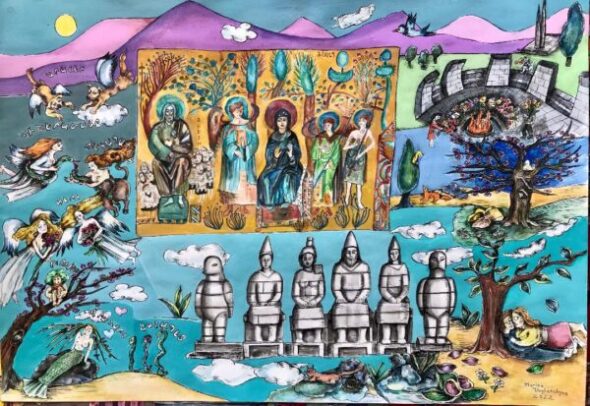
Dear Marina, from your personality, environment and work one can sense an innate intelligence and urbane tradition not often found among us, which is not surprising – your roots go back to such significant centers of Armenian culture as Shushi and Tiflis. You were five years old when your grandfather, the noted intellectual, actor and writer, People’s Artist of the USSR Vagharsh Vagharshyan, passed away. What memories do you have of him?
